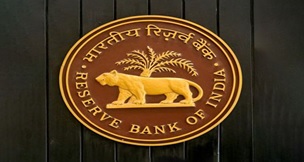13 October, 2025
Flexible Inflation Targeting (FIT) framework
Sun 24 Aug, 2025
Context
In August 2025, the Reserve Bank of India (RBI) released a discussion paper to evaluate the effectiveness and future direction of India’s Flexible Inflation Targeting (FIT) framework. This review is timely, as the current 4% CPI inflation target (with a ±2% tolerance band), set for 2016–2026, is due to expire in March 2026.
The RBI has cautioned against revising the inflation target upward, emphasizing that retaining the 4% target is essential for maintaining macroeconomic credibility, price stability, and the institutional integrity of monetary policy in India.
Background: What is FIT?
The Flexible Inflation Targeting framework was formally adopted in India under the RBI Act (Amended) 1934 through the Monetary Policy Framework Agreement (MPFA) between the Government of India and RBI in 2016.
Under this:
- The inflation target is set at 4% CPI, with a ±2% band (i.e., range of 2%–6%).
- The Monetary Policy Committee (MPC) decides the repo rate based on inflation forecasts.
- Price stability is the primary objective, with support for growth as a secondary mandate.
Key Highlights of the 2025 Discussion Paper
1. Retaining the 4% Target – Why?
The RBI strongly defends maintaining the 4% inflation target due to the following reasons:
A. Credibility with Global Investors:
Raising the target may signal a tolerance for higher inflation, weakening RBI’s policy stance. India’s recent upgrade to “BBB” by S&P Global Ratings cited inflation control as a key reason for macroeconomic stability.
B. Institutional Strength & MPC Integrity:
The FIT framework has institutionalized monetary policy through the MPC, ensuring transparency, accountability, and consistent communication.
C. Domestic Success – CPI Performance:
Since 2016, headline CPI has mostly remained within the 2–6% band.
- July 2025 CPI inflation was 1.55% – the second-lowest ever recorded since the series began.
- This suggests that price stability has been successfully achieved without harming growth.
D. External Sector Management:
Low inflation has kept the rupee stable, supported capital inflows, and maintained external competitiveness — all essential for India’s current account balance and investor confidence.
Arguments Against Raising the Target
- An upward revision could make real interest rates lower, leading to sustained inflation, hurting the poor and fixed-income groups.
- Weakens RBI’s autonomy and accountability.
- Encourages fiscal laxity — governments may feel less urgency to maintain price stability.
What Lies Ahead?
- The RBI has invited public and institutional feedback on the discussion paper before finalizing recommendations to the Government.
- The decision on a new inflation target or retention of the current one will be finalized jointly by the RBI and Ministry of Finance before March 2026.
Significance for India
- Maintaining inflation targeting ensures long-term macroeconomic stability and predictability in monetary policy, which boosts investor confidence, savings, and growth.
- FIT provides clear policy guidance to markets and anchors inflation expectations — essential for an emerging economy like India.
- A credible monetary policy strengthens India’s global reputation as a disciplined economic actor, especially amid global inflationary pressures.
Important Facts
| Key Feature | Details |
| Inflation Target (Current) | 4% CPI (with 2%–6% tolerance band) |
| Introduced | 2016 under Monetary Policy Framework |
| Statutory Authority | RBI Act, 1934 (Amended) |
| Implemented by | Monetary Policy Committee (MPC) |
| Current Target Valid Till | March 2026 |
| Recent CPI (July 2025) | 1.55% (second lowest ever recorded) |


















